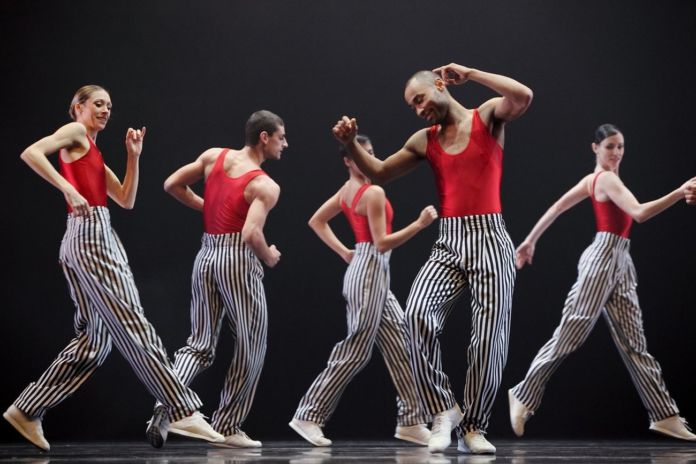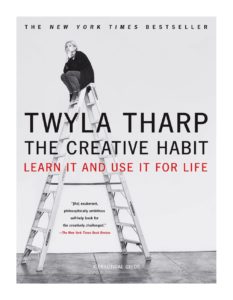Hard times? Nurture your creative habit

Artribune
According to choreographer Twyla Tharp, creativity is expressed through the ability to tolerate loneliness. We can all take advantage of this moment to develop it and reflect upon our identities in these changing scenarios. An opportunity that even cultural institutions could seize.
Read the full article on Artribune.
In these recent times of forced isolation, while we have all been coping with the Blank Page Syndrome, we have enjoyed finding ways to fill them. That feeling of emptiness has put us in front of a choice between indulging in boredom or plunging into the world of social media, to avoid the fear of being alone, and having a univocal relationship with our book or our film, without our avatars screaming “I’ve seen it” or “I’ve read it”.
We have all felt entitled to help fill the void, assuming that we are lost on our own and that we cannot use our critical sense to select, to evaluate the sources of our ideas, to savor the suspended sound of silence.
Intellectuals or creative workers have perhaps felt more understood and, in this surreal landscape, have finally redeemed their advantage: the ability to face the challenge of a white canvas that must be painted with a sensible thought, better if original, with the patience to embrace the stimulating idleness if that page is not written on command.
Creative habit teaches tolerance and acceptance of uncertainty. This is well explained by choreographer Twyla Tharp in her book “The Creative Habit: Learn It and Use It for Life”, a vademecum for creators in which she gives valuable advice and a list of exercises to train this potentiality that’s innate in each of us. This is not one of those motivational books that you can buy in a service station, with podcasts that you can listen out loud in your car before a life-changing meeting. The author is a choreographer and the message is powerful precisely because it comes from an excellent explorer of the abilities of our body, an aspect that is acquiring a central role in this historical moment. Like with other tools we have been given by nature, some explorers quibble to discover all the possibilities and mechanisms to trace a path, and others merely perpetuate a continuous sound that leaves few traces. Tharp is part of the first category and belongs to that group of personalities who have written the history of post-modern dance. By reading her book, we immediately understand why: at the base, there is a mindset that supports bodily practice, a constant contemplation, and an iron discipline.
MAKING ROOM TO FOLLOW AN OBJECTIVE
“Build your tolerance for solitude” is one of the first exercises that the author proposes to build our “creative habit”, an achievement that can only be reached through an individual path. Some developed it an early age, by enduring endless and lonely summer holidays where imagining the future became an escape route, some used their passion as a companion, a guaranteed friendship to cultivate over time with perseverance and dedication, and some have not yet had the opportunity to develop it. That tolerance of loneliness cannot be injected, nor handed down, and this is often forgotten by the “already tolerant”, with their uncontrollable impulse to guide those who Tharp calls “self-phobic people”: “find a hobby, a passion, read this book, watch this film, come to the theater”, a stimulation that proves to be counterproductive in helping them to overcome the fear of being alone with themselves. “To build your tolerance for solitude, you need a goal”, Tharp suggests. According to the choreographer, the goal that each of us aims for can transform loneliness into calmness, because when the mind is busy you are never alone, and it is by embracing this condition that you can create the fertile ground for creative thinking. Thus, the forced isolation of today will make us more creative tomorrow and more selective in building relationships with others, no longer moved by the need to avoid loneliness but aware of the companions with whom we want to share our journey. This is the lifebelt that artists or intellectuals can throw from their ark to those who are not accustomed to the side effects of emptiness, time, and freedom. Amid this situation that weighs on us with mourning and dramatic stories, the commitment and research that will be used to develop tolerance to this virus offer us an opportunity: the possibility to develop our tolerance to loneliness, a precious chance that concerns not only human beings.
DEALING WITH CHANGE BY LISTENING
Culture and entertainment are sectors that are heavily affected by this situation, and the Twyla Tharp, The Creative Habit (Simon & Schuster, 2006) search for virtual solutions for the fruition of their offer is undertaken by many to maintain contact with their audience. The economic damage is undeniable, but let’s try to look at the glass half full for a moment: what if some cultural activities actually needed an empty space to develop tolerance and a development strategy, but could not afford it because they were busy covering stacked problems? Today, by accepting fragility as a necessary condition for transformation, the entire cultural sector also has the opportunity to develop its tolerance to loneliness by rethinking the role it holds in society and the identity it can assume in a scenario of change. The

reflections on post-COVID-19 for the performing arts sector embrace the technological explosion as an alternative mode for the restriction of use and entrances until the doors of the theatres can reopen completely. A transition in which it is necessary to keep the flame of the theatrical experience alive by the coexistence of artists and audience in a shared physical space, without fearing the emergence of a parallel kind of fruition, a hybridization that can open the boundaries of our theatrical spaces and implement the methods of communication of our institutions. We must convince ourselves that the narrative that accompanies the activity carried out by the theatres is fundamental, and consider the possibility of concentrating more energies towards it than in the past: the presence on social media in this moment of absence can become a coexistence tomorrow, a channel to tell the stories of those who build the shows, how the shows are born, what is hidden behind the curtain, inviting us to become part of a physical community before (or after) a virtual one. What is the value of my cultural offer and how can I convince my potential audience to physically attend the theatre? This is a question which we can answer thanks to this increasing wait, also by studying new tools and practices used in other sectors, which we couldn’t do before due to the lack of time caused by the bubble of continuous productivity.
NEW USES OF THE THEATRICAL ENVIRONMENT
These times require an even stronger effort of social legitimation of the institutions, not only to bring the public back to attending theatres in a carefree way but also to motivate and enhance the intervention of private individuals with their investments in the sector. The storytelling that documents the theatrical activity and shows how the show is nothing more than the last link in a long, coordinated work, that employs a network of professionals, thus becomes fundamental, also for the conception of the theatrical performance as a component of an experiential tourist offer. Finally, there is the question of a different use of the theatrical environment. The conception of the scenic space in alternative forms is not new, but the dramaturgical nature of a specific declination of spaces is very different from the constraint of a regulated space to safeguard us and those around us. The imposition of an obligation that regulates the use of the area could act as a stimulus for a renewed consideration of traditional scenic spaces that offer live performances and stimulate paths of creation where proxemics influence the process. A constraint to be considered as a creative possibility that could write a new page for the artistic research and spatial architecture of our theatres, a page that can be written only if we can keep on listening to what this situation is leading to, even when we go back to full activity.